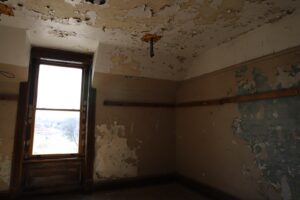1.6m children living in cold, damp or mouldy private rented homes
New research from Citizens Advice finds that 1.6 million children are currently living in privately rented homes with damp, mould or excessive cold, three ingredients which guarantee that indoor air quality will be compromised.
The researchers spoke to a mother of two who, shortly after moving into a rented home, noticed mould and damp in the property. The letting agent installed a vent and told her to keep the property at a certain temperature, something she could not afford to do. ‘I’ve dealt with condensation in previous houses’, she said, ‘but nothing like the mould and damp in this house. I was so worried about both my sons’ health. They’ve been so poorly and I’ve had them both in hospital with chest infections. They were never sick like this before.’

The recently announced Awaab’s Law (named after Awaab Ishak who died due to the damp and mould in his home) will force social landlords to fix damp and mould within strict time limits and Citizens Advice are now calling on the government to bring regulation of the private rental sector in line with that.
‘The government must follow through on its promise to make sure all new private rental properties are upgraded to a minimum EPC (Energy Performance Certifcate) C by 2025 and existing tenancies by 2028.
‘Landlords are currently only required to bring their properties up to an E rating. What’s more, landlords currently don’t have to make any improvements if it’s going to cost them more than £3,500. This cap on landlord investment needs to be increased from £3,500 to £10,000.’
The survey added that 30% of renters say they can’t heat their home to a comfortable temperature, increasing to 45% of disabled tenants, echoing an article we published last month.
A WHO report into dampness and mould stated: ‘microbial pollution is a key element of indoor air pollution’ and found that ‘occupants of damp or mouldy buildings, both houses and public buildings, are at increased risk of respiratory symptoms, respiratory infections and exacerbation of asthma.’

















